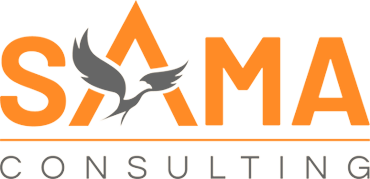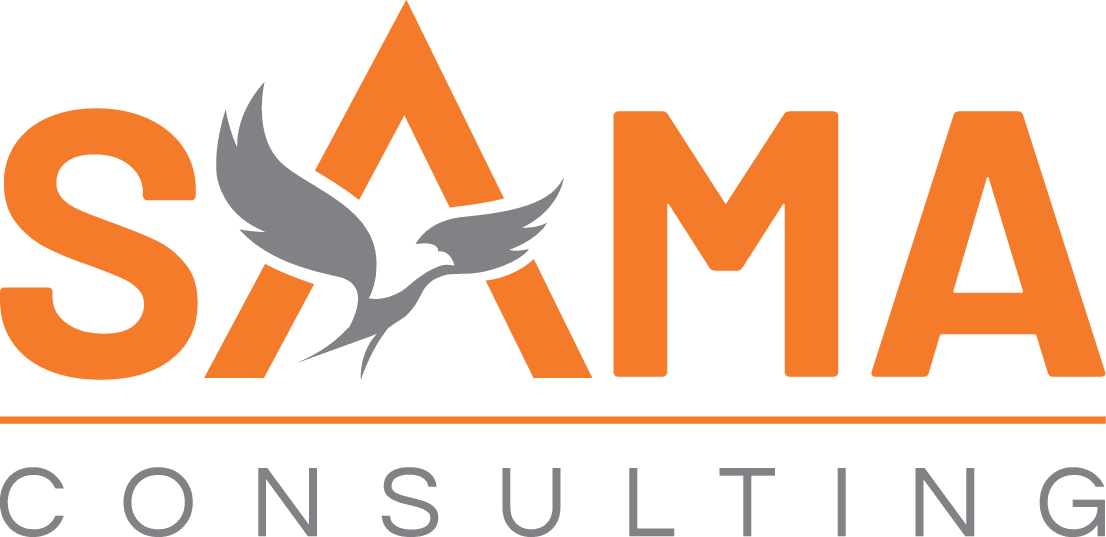
Unlocking Efficiency: A Beginner’s Guide to Infor EAM for Modern Asset Management
Asset-intensive organizations face twin pressures: run equipment reliably, and do it with lower cost and higher compliance. Traditional asset management—paper logs, spreadsheets, siloed systems—creates blind spots: unknown equipment history, missed inspections, reactive repairs, and hidden costs. In an era of tighter margins, higher regulatory scrutiny, and exploding data sources (IoT, mobile, cloud), these blind spots are unacceptable.
Modern Enterprise Asset Management (EAM) platforms convert asset visibility into operational leverage. They centralize asset master data, automate maintenance workflows, ingest live sensor streams, and provide analytics that turn maintenance from a reactive cost center into a predictive, value-creating function.
Infor EAM is one of the major enterprise-grade EAM platforms designed for that transformation. This guide digs deep — technical explanations, practical workflows, integration patterns with middleware like Infor ION, implementation playbooks, and measurable KPIs — so you can plan, justify, and execute an Infor EAM deployment that actually moves the needle.
If you’re evaluating partners or want a practical implementation partner, Sama Consulting helps organizations architect and deploy Infor EAM solutions — see our home page for services and capability details: https://samaconsultinginc.com/.
Ready to transform your asset management with Infor EAM?
Sama Consulting helps asset-intensive organizations implement Infor EAM solutions that increase equipment reliability, reduce downtime, and turn maintenance into a strategic advantage through predictive analytics and seamless integrations.

What is Infor EAM? A Beginner’s Foundation
Definition and Purpose
Infor EAM (Enterprise Asset Management) is a comprehensive software platform for tracking, maintaining, and optimizing physical assets across their entire lifecycle. It covers asset master data, preventive/predictive maintenance, work order management, inventory and spares, procurement interfaces, compliance and inspection records, and analytics.
The goal is straightforward: increase asset availability and lifetime while reducing total cost of ownership (TCO). Infor EAM accomplishes this by unifying data, automating repeatable processes, and enabling real-time decision-making.
Who Uses Infor EAM?
Infor EAM is used across industries that rely heavily on physical assets:
- Manufacturing: production lines, presses, CNC machines.
- Energy & Utilities: transformers, turbines, distribution networks.
- Healthcare: imaging equipment, HVAC systems, sterilization equipment.
- Transportation & Logistics: fleets, conveyors, warehouse machinery.
- Facilities & Government: building systems, public infrastructure.
What an EAM Platform Should Deliver
At a minimum, a modern EAM must:
- Maintain a trusted Asset Master (unique identifiers, hierarchical locations).
- Schedule and manage maintenance work (planned vs. reactive).
- Track inventory, spares, and procurement status.
- Record compliance events and certifications.
- Accept real-time telemetry and create actions from it.
- Provide role-based mobile access for technicians.
- Offer analytics and KPIs to measure performance.
For a module-by-module breakdown and how Sama Consulting approaches Infor EAM feature configurations, see: https://samaconsultinginc.com/infor-eam/.
Ready to transform your asset management with Infor EAM?
Sama Consulting helps asset-intensive organizations implement Infor EAM solutions that increase equipment reliability, reduce downtime, and turn maintenance into a strategic advantage through predictive analytics and seamless integrations.

Key Features of Infor EAM — Technical Deep Dive
Below we unpack the most important Infor EAM capabilities, how they work technically, and what implementation decisions you’ll face.
1. Preventive & Predictive Maintenance
Preventive maintenance (PM) schedules work at fixed intervals (time-based or usage-based). Infor EAM supports rule-based PM generation: time windows, meter thresholds, conditional triggers (e.g., if running hours > X then create work order).
Predictive maintenance (PdM) leverages sensor data and analytics to predict failures before they occur.
Technical design notes:
- Data pipeline: sensor → edge gateway → message broker (MQTT/Kafka) → time-series storage → feature pipeline → model inference → event.
- Integration point: Infor EAM receives predictive alerts via API or middleware (e.g., Infor ION) that create flagged work orders with root-cause suggestions and confidence scores.
- Model ops: retrain cadence should be defined (weekly/monthly) and include holdout validation, drift detection, and A/B testing of model versions.
- Example: vibration spikes above 3σ + rising trend for 48 hours → PdM alert → automatic creation of inspection work order with priority and parts recommended.
2. Asset Lifecycle Management
Asset lifecycle in Infor EAM covers acquisition → commissioning → operations → maintenance → depreciation → disposal.
Key technical pieces:
- Asset master schema (standard fields): asset_id, asset_tag, serial_number, model, manufacturer, install_date, warranty_end, location_id, status, cost_center, depreciation_account.
- Hierarchies: assets are organized into location/functional hierarchies for roll-up analytics (site → plant → line → machine).
- Versioning: maintain change history for asset attributes (important for audits).
- Financial integration: asset acquisition and disposal flows should post journals to ERP automatically via integration.
3. IoT and Sensor-Based Monitoring
Modern EAMs ingest telemetry. Typical architecture:
- Edge gateways collect protocols like OPC-UA, Modbus, and forward normalized messages (MQTT/REST).
- Message broker ensures reliable, ordered delivery and can buffer during outages.
- Preprocessing performs downsampling, aggregation, and anomaly detection at the edge to reduce data volume.
- Time-series DB stores raw and aggregated metrics (e.g., InfluxDB, Timescale).
- Integration: analytics or rules engines publish actionable events to Infor EAM.
Implementation decisions:
- Push vs pull telemetry (push preferred for real-time alerting).
- Data retention policies for raw vs aggregated data.
- Security: mutual TLS and device identity (X.509 certificates).
4. Mobile Access and Work Management
Field technicians need reliable, sometimes offline-capable mobile access.
Technical features to design:
- API layer: secure RESTful endpoints exposing work order CRUD, UIs, asset data, and attachments.
- Offline sync: local database on device (SQLite/Realm), change queue, and conflict resolution rules.
- Media uploads: compressed images and voice notes attached to work orders; consider chunked uploads for poor networks.
- Authentication: SSO (SAML/OpenID Connect) or token-based OAuth2 for secure mobile sessions.
A typical mobile work order JSON:
{
“workOrderId”: “WO-2025-00421”,
“assetId”: “AS-4362”,
“priority”: “High”,
“tasks”: [
{“taskId”: “T1”, “description”: “Inspect bearing”, “laborHours”: 1.5}
],
“requiredParts”: [
{“partId”: “P-204”, “qty”: 1}
],
“status”: “Assigned”,
“assignedTo”: “tech_102”,
“attachments”: [
{“type”: “image”, “filename”: “bearing.jpg”}
]
}
5. Regulatory Compliance and Safety Tracking
EAM must support scheduled inspections, certifications, calibration records, and audit logs.
Technical elements:
- Inspection templates (checklist-driven) with pass/fail and corrective actions.
- Certificate management with expiry notifications and auto-work order generation.
- Traceability: link work orders and inspection results to compliance events and document attachments (PDFs).
- Immutable audit trails for regulatory audits (timestamped and signed entries).
6. Analytics and Reporting
Analytics layers provide both operational dashboards and predictive insights.
- Operational dashboards: KPI tiles (MTTR, MTBF, planned maintenance percent).
- Ad-hoc queries: user-friendly builders and exported datasets for finance or operations.
- Data warehouse: ETL pipelines push EAM events into a data warehouse for cross-system analytics and BI tools.
- Embedded ML scoring: right inside the alerting pipeline, top N features and model confidence are surfaced along with suggested maintenance actions.
Ready to transform your asset management with Infor EAM?
Sama Consulting helps asset-intensive organizations implement Infor EAM solutions that increase equipment reliability, reduce downtime, and turn maintenance into a strategic advantage through predictive analytics and seamless integrations.

How Infor EAM Drives Efficiency in Modern Businesses
Let’s translate features into measurable outcomes and show the technical mechanisms that produce them.
Cost Savings through Reduced Downtime
- Mechanism: predictive alerts + automated spare reservation cut failure-to-repair time.
- Metric impact: reduce unplanned downtime hours by X% (industry targets range 10–40% depending on maturity).
- Technical enablers: fast event processing, prioritized work queues, parts reservation via integrated inventory.
Better Decision-Making with Real-Time Data
- Mechanism: dashboards, KPIs, and asset health indexes built from telemetry + historical maintenance data.
- Example: combining vibration trend + temperature + maintenance history yields a composite Health Score that ranks assets for replacement.
Improved Regulatory Compliance
- Mechanism: scheduled inspections, automated notifications for certificate expiry, and stored evidence for audits.
- Technical enablers: immutable logs, document linking, role-based approvals.
Workforce Efficiency with Mobility
- Mechanism: techs see assigned work orders, parts availability, and history on mobile; capture on-site evidence; close orders immediately.
- Outcome: higher first-time-fix rates, less rework, and more productive labor utilization.
Infor EAM Integrations: Extending the Power of Asset Management
Integration is where EAM converts operational events into enterprise value. A standalone EAM is useful; an integrated EAM is transformational.
Why Integrate?
- Financial alignment: post maintenance and asset costs back to the ERP GL automatically.
- Inventory synchronization: reserve and pull parts from the ERP or WMS when a work order issues parts.
- Supply chain: trigger purchase requisitions for long-lead items, and track delivery status.
- CRM & field service: coordinate customer-impacting maintenance windows.
- Analytics: feed asset and maintenance data into centralized BI and data science platforms.
Role of Infor ION (Integration Platform)
Infor ION is the middleware designed to connect Infor products with each other and third-party systems. Architecturally, treat ION as a message and orchestration layer that enables:
- Event routing: push EAM events (work order created/closed, asset added) to subscribed systems.
- Transformation: map EAM payloads to canonical financial/ERP formats.
- Orchestration: implement multi-step flows (e.g., upon asset commissioning, create asset in ERP, provision warranty record, and notify procurement).
- Monitoring and retries: provide visibility into failed transactions and automatic retry logic.
For practical integration approaches and patterns, see Sama Consulting’s page on Infor ION integrations: https://samaconsultinginc.com/infor-ion-integrations/.
Typical Integration Flows (Examples)
Work Order → ERP Cost Posting
- Event: WO is closed in EAM.
- ION action: transform WO summary to accounting journal format, post to ERP API.
- Idempotency: WO UUID used to prevent duplicate journal entries.
- Error handling: failures are queued and surfaced to a reconciliation dashboard.
Predictive Alert → Parts Reservation
- PdM system triggers an alert with recommended part IDs.
- ION queries Inventory/WMS for availability; reserves parts or opens PO.
- EAM work order is auto-created with reserved parts attached.
Asset Master Sync
- When a new asset is created in EAM, ION emits a creation event to ERP and CMMS, ensuring single-source-of-truth for asset_tag and serial_number.
Integration Best Practices (Technical)
- Canonical data model: design canonical field names (asset_id, location_code) to reduce mapping complexity.
- Idempotent APIs: require unique transaction identifiers.
- Circuit breakers and backpressure: prevent overloads during batch imports or peak telemetry spikes.
- Secure channels: TLS 1.2+/mutual TLS; use OAuth2 bearer tokens with rotation; enable RBAC and audit logs.
- Monitoring: instrument every integration with metrics, SLAs, and error dashboards.
- Transactional guarantees: choose eventual consistency where appropriate, use compensating transactions for multi-step processes.
Ready to transform your asset management with Infor EAM?
Sama Consulting helps asset-intensive organizations implement Infor EAM solutions that increase equipment reliability, reduce downtime, and turn maintenance into a strategic advantage through predictive analytics and seamless integrations.

Best Practices for Implementing Infor EAM
A technical implementation must be paired with strong planning and governance. Below is a practical, phased playbook and the details to make it succeed.
Phased Implementation Roadmap
Discovery & Assessment (2–6 weeks)
- Stakeholder interviews, asset inventory audit, and data quality assessment.
- Define KPIs (MTTR, MTBF, % planned maintenance).
- Identify integrations and technical constraints (network, IoT gateways).
Design (4–8 weeks)
- Data model design (asset taxonomy, location hierarchy).
- Define PM rules, workflows, approvals, and mobile UX flows.
- Security design: authentication, authorization, data encryption.
Pilot (6–12 weeks)
- Select a pilot site or asset class with high failure cost and manageable scope.
- Implement telemetry, PM, mobile work orders, and ERP integration for the pilot scope.
- Run pilot for several failure cycles to validate PdM models and processes.
Iterative Rollout (3–9 months)
- Roll out functionality site-by-site or asset class-by-asset class.
- Train trainers and ramp up support.
Stabilize & Optimize (ongoing)
- Tune PM intervals, update PdM thresholds, and iterate on dashboards.
- Establish a continuous improvement forum (monthly reviews).
Data Migration Strategy
- Extract → Transform → Load (ETL) from legacy systems, spreadsheets, and OEM data.
- Data cleansing: deduplicate asset tags, normalize location names, reconcile serial numbers.
- Mapping table example:
| Legacy Field | EAM Field | Transformation |
|---|---|---|
| Tag# | asset_tag | trim, uppercase |
| LocName | location_id | map via location lookup |
| LastService | last_service_date | date parse to ISO 8601 |
- Validation: run reconciliations (counts, random checks) and hold a reconciliation report before cutover.
Change Management & Training
- Role-based training: planners, technicians, inventory clerks, finance.
- Shadow mode: run new EAM in parallel with legacy for 4–8 weeks where feasible.
- Super users: create a network of power users who can act as first-line support.
- Communication: clear FAQ, playbooks for mobile use, and escalation matrix.
Governance & KPIs
Define a measurement plan with ownership:
- MTTR (Mean Time to Repair): target reduction % per quarter.
- MTBF (Mean Time Between Failures): monitor upward trend.
- Planned Maintenance Compliance: % of PMs completed on schedule; target > 90%.
- First Time Fix Rate: increase percentage over baseline.
- Maintenance Cost per Unit: month-over-month reduction target.
Use Cases: Infor EAM in Action (Detailed Workflows)
Concrete workflows make theory actionable. Below are sample, technical workflows for common industries.
Manufacturing — Predictive Maintenance Workflow
- Sensors on a gearbox stream RPM, vibration, and temperature.
- Edge gateway computes rolling statistics and pushes anomalies to the analytics engine.
- Ml model predicts bearing failure in 10 days with 82% confidence.
- ION receives the alert, consults inventory and reserves bearings, and creates a high-priority work order in Infor EAM.
- Mobile tech receives the work order, goes on-site, replaces the bearing, and attaches photos and torque readings to the work order.
- EAM closes the work order, posts maintenance cost to ERP, and updates the asset’s health score.
Healthcare — Equipment Compliance & Tracking
- Calibration schedules are maintained in EAM with attachments of calibration certificates.
- Inspections are scheduled automatically based on time or usage; failed inspections create CAPA (Corrective and Preventive Action) tickets.
- Audit trail: every status change recorded with user, timestamp, and comments for regulators.
Energy & Utilities — Asset Reliability
- SCADA telemetry feeds into the analytics layer.
- Outage prediction triggers crew mobilization and spare staging.
- Regulatory reporting: EAM aggregates inspection and maintenance logs into formatted reports tied to regulatory identifiers.
Logistics — Fleet & Warehouse Asset Management
- Telematics integration with vehicles provides location and engine codes.
- Automatic mileage-based PM generation.
- Parts workflow integrates with central distribution centers for cross-site parts pull.
The Role of Consulting in Maximizing Infor EAM ROI
Implementing and deriving value from Infor EAM requires domain knowledge, change management expertise, and technical integration skills. A consulting partner helps in several concrete ways:
- Scoping: define the right pilot and avoid scope creep.
- Data strategy: clean and structure legacy data for migration.
- Integration engineering: build reliable, secure connections (ION, APIs).
- Change management: design training and adoption programs.
- Sustained support: provide go-live hypercare and SLA-backed support.
Sama Consulting specializes in Infor EAM implementations and integration projects — they provide tailored implementation, training, and managed services. Learn more about how they can help: https://samaconsultinginc.com/.
Future of Enterprise Asset Management with Infor
The EAM landscape is moving fast. Here are the biggest technical trends to watch and how to prepare:
AI & Machine Learning: From Alerts to Decisions
- Move beyond anomaly detection to remaining useful life (RUL) and prescriptive actions.
- Build MLOps practices: model registries, version control, and retrain automation.
Digital Twins
- Create lightweight digital twins for critical assets to simulate “what-if” scenarios.
- Twins combine CAD, telemetry, and historical maintenance to predict degradation under different loads.
Cloud-First & Edge Hybrid Architectures
- Cloud-first EAM offers scalability and consolidated analytics.
- Edge processing reduces latency and bandwidth for high-frequency telemetry; hybrid models balance both.
Interoperability & Open APIs
- Expect richer ecosystems: third-party PdM vendors, OEM portals, and marketplaces for predictive models.
- Prioritize API-first design to enable rapid integration and partner innovation.
Ready to transform your asset management with Infor EAM?
Sama Consulting helps asset-intensive organizations implement Infor EAM solutions that increase equipment reliability, reduce downtime, and turn maintenance into a strategic advantage through predictive analytics and seamless integrations.

Implementation Checklist (Technical & Organizational)
- Complete asset inventory and canonical data model.
- Design integration architecture and security model.
- Choose pilot assets/sites with measurable KPIs.
- Configure PM templates, inspection forms, and mobile flows.
- Implement telemetry pipeline and define anomaly rules.
- Establish ETL for migration, perform validation cycles.
- Train users and establish governance.
- Define KPIs and dashboards; instrument monitoring for integrations.
- Plan for continuous improvement and model retraining.
Conclusion & Call to Action
Infor EAM can be a powerful engine for operational efficiency, compliance, and long-term asset optimization — but only if it’s implemented with a clear technical architecture, strong data discipline, and cross-functional processes. Modern EAM programs require more than a software install: they need IoT pipelines, robust integrations (often orchestrated via middleware like Infor ION), mobile workflows, and an operational cadence to act on analytics.
If you’re ready to accelerate asset reliability and turn maintenance into a competitive advantage, get the right technical and change-management partner. Sama Consulting offers hands-on expertise with Infor EAM implementations, integrations, and long-term managed services — explore our Infor EAM services and integration offerings here:
- Sama Consulting (company overview): https://samaconsultinginc.com/
- Infor EAM services and modules: https://samaconsultinginc.com/infor-eam/
- Infor ION integrations and architecture guidance: https://samaconsultinginc.com/infor-ion-integrations/
Want a tailored plan (pilot scope, data migration checklist, and KPI targets) for your environment? Reach out to Sama Consulting through our site and request a discovery workshop — it’s the fastest way to translate this plan into measurable results.
Ready to transform your asset management with Infor EAM?
Sama Consulting helps asset-intensive organizations implement Infor EAM solutions that increase equipment reliability, reduce downtime, and turn maintenance into a strategic advantage through predictive analytics and seamless integrations.

